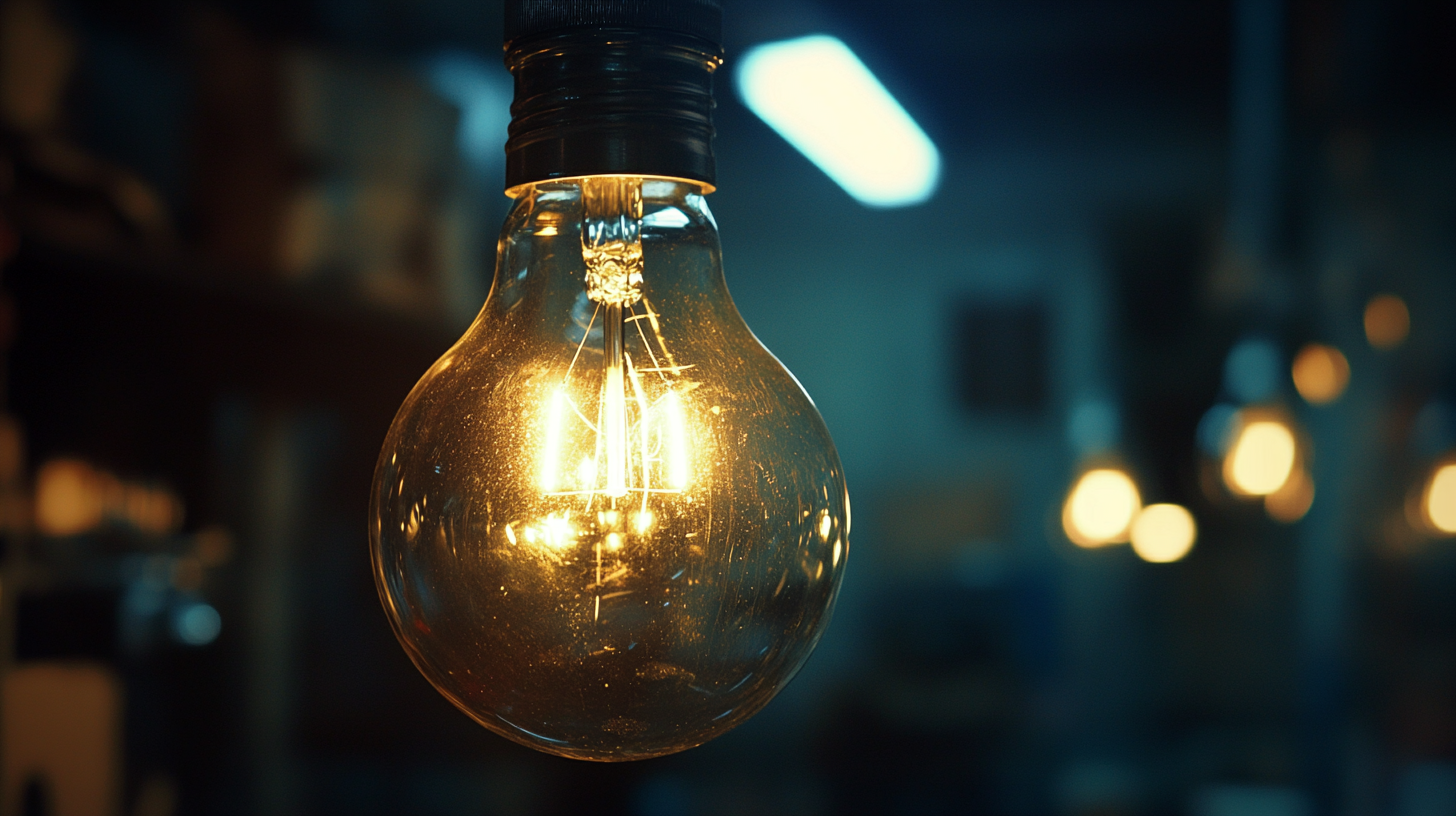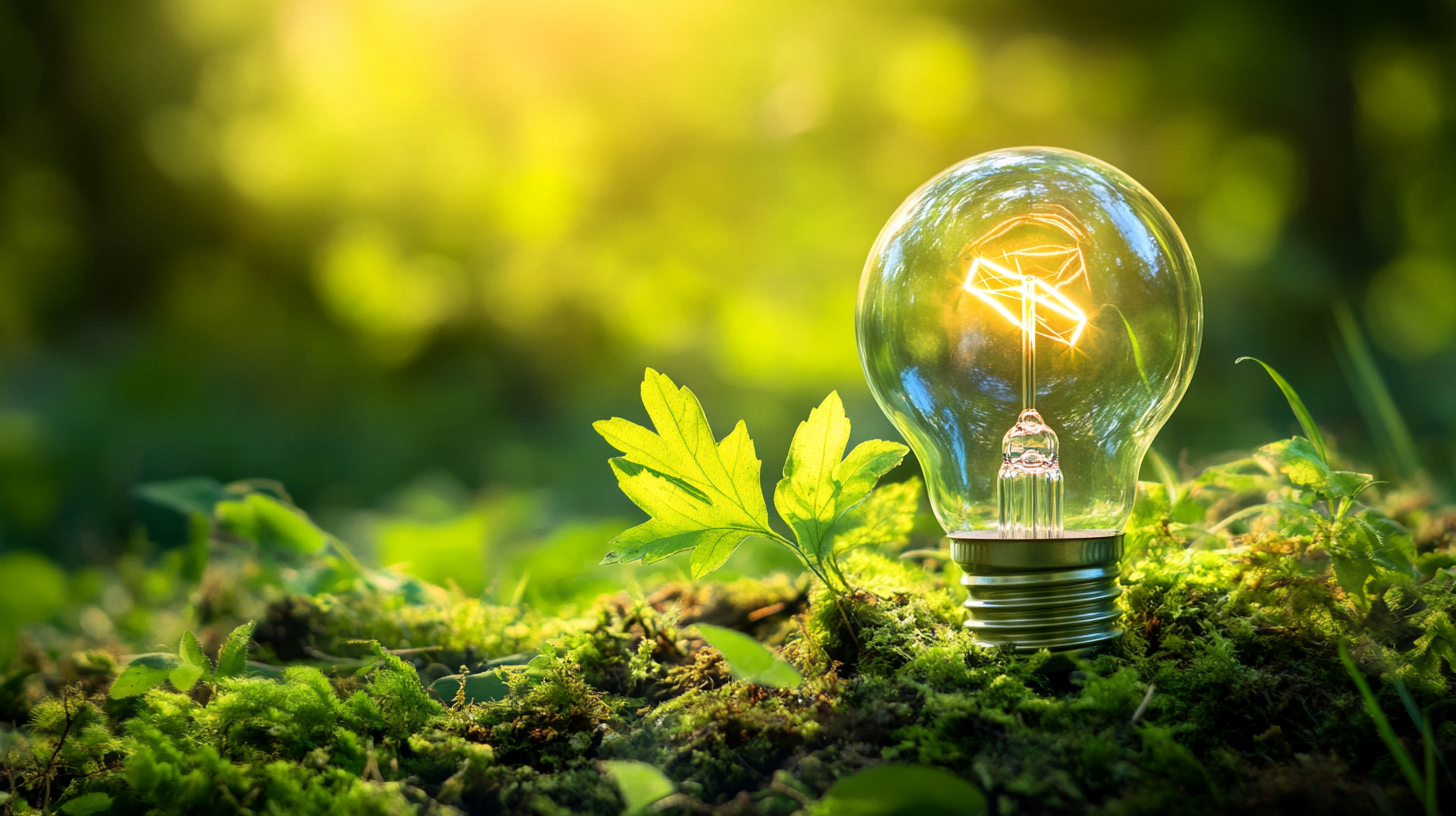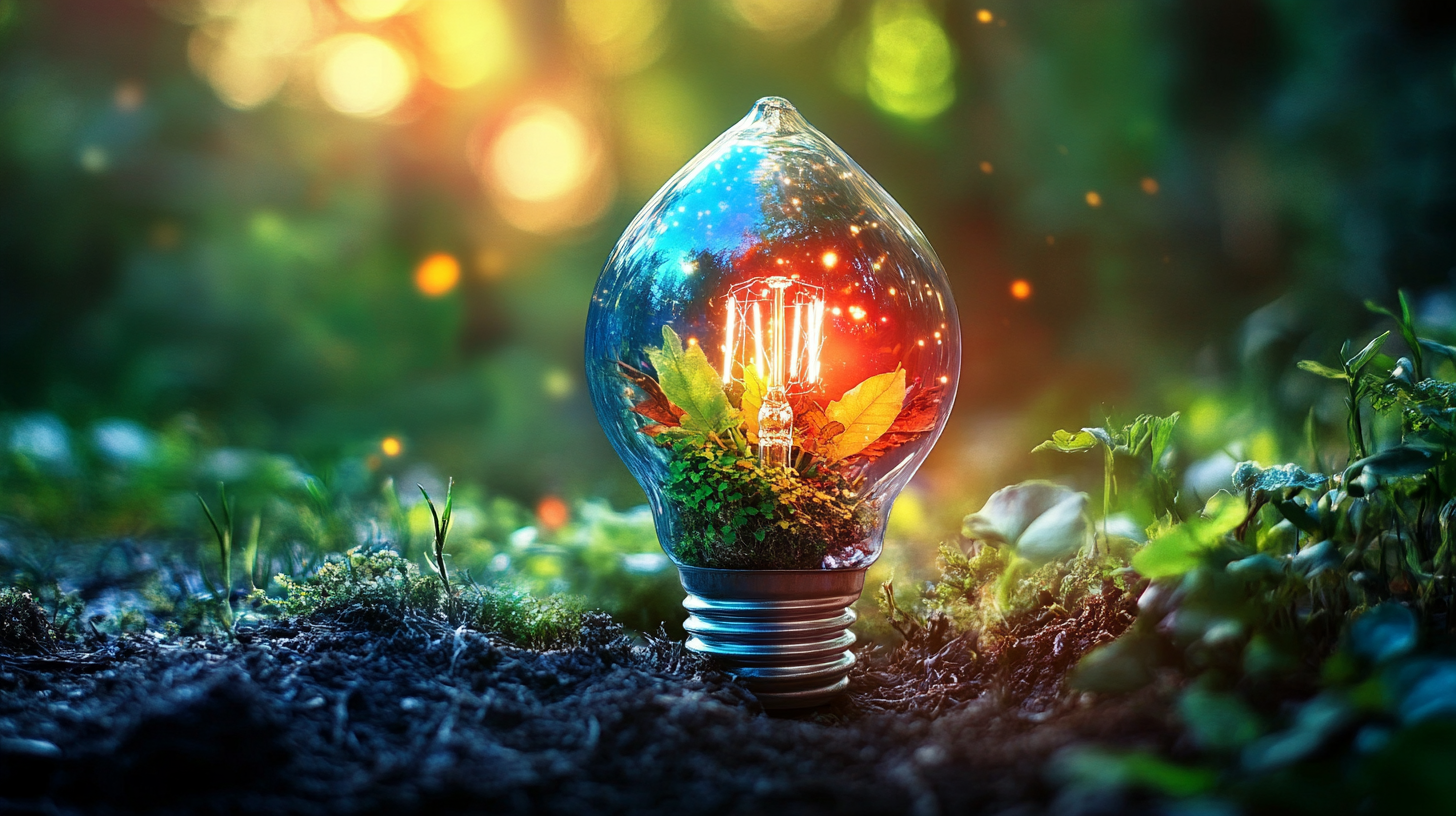Advantageous Features of Embracing Led Bulbs for Sustainable Lighting Solutions
In recent years, the shift towards sustainable lighting solutions has gained significant momentum, with LED bulbs emerging as a frontrunner in this evolution. According to a report by the U.S. Department of Energy, the widespread adoption of LED technology could save more than 348 terawatt-hours of electricity by 2027, equating to a staggering $30 billion in energy costs. This illuminative innovation not only reduces energy consumption but also boasts a lifespan that is 25 times longer than traditional incandescent bulbs. Furthermore, LED bulbs contribute to decreasing greenhouse gas emissions, placing them at the forefront of eco-friendly alternatives. As consumers increasingly prioritize sustainability in their purchasing decisions, embracing LED bulbs becomes not just a choice but a necessity for both economic and environmental benefits. In this blog, we will explore the advantageous features of LED bulbs and their remarkable potential in transforming our approach to lighting solutions.

Benefits of Energy Efficiency in LED Bulbs for Sustainable Living
Embracing LED bulbs represents a pivotal shift toward energy efficiency and sustainable living. One of the most compelling benefits of LED technology is its remarkably low energy consumption. Unlike traditional incandescent bulbs, which waste a significant portion of energy as heat, LED bulbs convert a higher percentage of electricity into light. This efficiency not only reduces electricity bills but also minimizes the overall demand for energy, contributing to a lower carbon footprint.
Another advantage of LED bulbs is their longevity. With a lifespan that often exceeds 25,000 hours, LEDs require far less frequent replacements than conventional bulbs. This durability leads to decreased waste in landfills as fewer bulbs are discarded. Moreover, as LEDs generate less heat, homes remain cooler, reducing the need for air conditioning during hotter months. The combination of energy savings and reduced waste makes LED lighting a smart choice for those committed to sustainable living and environmental stewardship.

Long-Term Cost Savings: Understanding the Financial Advantages of LEDs
Embracing LED bulbs for sustainable lighting solutions not only contributes to environmental conservation but also offers significant financial advantages. One of the most appealing aspects of LED technology is its energy efficiency. Unlike traditional incandescent bulbs, which consume more energy and have a shorter lifespan, LEDs use up to 80% less energy while providing the same level of brightness. This reduced energy consumption translates directly into lower electricity bills, making LEDs a cost-effective choice for both residential and commercial spaces.
Moreover, the lifespan of LED bulbs is another factor that adds to their long-term cost savings. While a standard incandescent bulb may last around 1,000 hours, LEDs can shine for as long as 25,000 hours or more. This remarkable durability means fewer replacements over time, reducing both the costs associated with purchasing new bulbs and the potential labor costs for installations in larger facilities. By switching to LED lighting, consumers can not only enjoy immediate savings but also cultivate financial dividends that accumulate over years, proving that sustainability and cost-effectiveness can indeed go hand in hand.

Environmental Impact: Reducing Carbon Footprint with LED Lighting
LED lighting is transforming the way we think about energy consumption and environmental sustainability. By replacing traditional incandescent and fluorescent bulbs with LED alternatives, we significantly reduce our carbon footprint. LED bulbs use up to 80% less energy than their conventional counterparts, meaning a dramatic decrease in electricity usage, which is a major contributor to greenhouse gas emissions. This reduction in energy consumption not only benefits the environment but also results in lower electricity bills for households and businesses.
Moreover, LED lighting boasts an impressive lifespan, lasting up to 25 times longer than incandescent bulbs. This longevity minimizes waste, as fewer bulbs need to be manufactured and disposed of. The production and disposal processes of traditional lighting options often contribute toxic materials to landfills, negatively impacting ecosystems. In contrast, the adoption of LED technology promotes a more sustainable lifecycle, thereby enhancing our overall environmental stewardship. By choosing LED lighting, we are not just lighting our homes; we are making a conscious decision to protect our planet for future generations.
Advantageous Features of Embracing LED Bulbs for Sustainable Lighting Solutions
This pie chart illustrates the environmental impact of LED lighting solutions in terms of carbon footprint reduction compared to traditional lighting options. As more people switch to LED lighting, we can see significant progress in energy savings and lower carbon emissions.
Versatility and Aesthetic Appeal: How LEDs Enhance Interior Design
Embracing LED bulbs not only contributes to sustainable lighting solutions but also enhances the versatility and aesthetic appeal of interior spaces. As the demand for energy-efficient lighting increases, the global LED market is projected to reach USD 137.7 billion by 2026, reflecting a compound annual growth rate of approximately 13.5% from 2021. This advancement in lighting technology allows designers and homeowners alike to explore innovative applications that blend functionality with style.
The integration of LED technology facilitates a dynamic approach to interior design. LEDs come in a variety of shapes, sizes, and colors, providing limitless opportunities for personalization. According to recent reports, up to 90% of an interior's ambiance can be affected by the quality of light used. This emphasizes the crucial role that LEDs play not only in emitting energy-efficient light but also in creating mood and enhancing the visual appeal of spaces. Whether through strip lights in modern kitchen designs or elegant fixtures in residential settings, LEDs have proven to be essential in crafting atmospheres that resonate with contemporary aesthetics.
Furthermore, partnerships between leading manufacturers and innovative companies are paving the way for advanced ambient lighting solutions. The successful collaboration between system integrators and ambient lighting suppliers showcases how strategic alliances can leverage cutting-edge technology to offer enhanced experiences. This not only represents a shift toward smarter lighting solutions that prioritize design and function but also underscores the growing recognition of the role lighting plays in architectural and interior design.
Advantageous Features of Embracing Led Bulbs for Sustainable Lighting Solutions
| Feature | Description | Benefits | Interior Design Impact |
|---|---|---|---|
| Energy Efficiency | LED bulbs consume significantly less energy compared to traditional bulbs. | Lower electricity bills and reduced carbon footprint. | Allows for more design flexibility, as energy savings can be allocated to other aesthetic elements. |
| Longevity | LED bulbs have a lifespan of up to 25,000 hours or more. | Fewer replacements needed, reducing waste. | Enables consistent lighting design over time without frequent changes. |
| Color Variety | Available in a wide range of colors and shades. | Enhances mood and ambiance in different spaces. | Offers designers the ability to create unique atmospheres with color choices. |
| Dimmability | Many LED options are compatible with dimmer switches. | Provides control over lighting intensity and energy use. | Facilitates dynamic interior design, adapting lighting to various activities. |
| Low Heat Emission | LED bulbs generate minimal heat compared to incandescent bulbs. | Safer for spaces where heat could be an issue, reducing cooling costs. | Allows for creative lighting fixtures and placements that would not work with hotter bulbs. |
Longevity and Durability: The Long-Term Investment of LED Technology
The longevity and durability of LED technology position it as a favorable choice for sustainable lighting solutions. LED bulbs can last up to 25,000 hours or more, significantly outpacing traditional incandescent bulbs, which typically last about 1,000 hours. This impressive lifespan translates to fewer replacements, ultimately reducing waste and promoting a more sustainable approach to lighting. Industry analyses indicate that the emergency lighting market is shifting toward LED solutions due to their efficiency, with LEDs offering up to 80% energy savings compared to their incandescent counterparts.
Moreover, the resilience of LED bulbs against shock, vibration, and temperature fluctuations further underscores their long-term investment value. Recent reports reveal that LED technology is becoming the dominant player in emergency lighting systems, representing a notable share of the market. This shift can be attributed to their lower operational costs and longer lifespan, leading to reduced maintenance efforts and expenses for facilities. As residential and commercial sectors increasingly embrace LED lighting, the benefits of durability become even more evident, establishing LEDs as a reliable choice for sustainable and effective lighting solutions.

